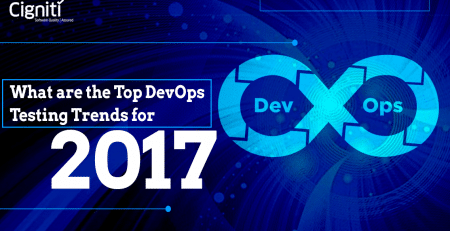How and Why You Need to Use Dockers In CI & CD
Docker has become an early adopter of continuous integration and continuous deployment. By leveraging the proper integration with source code control mechanisms such as GIT, Jenkins can initiate a build process each time a developer commits his code. This process results in a new Docker Image, instantly available across the environment. Considering this, the question emerges: ‘Why use Docker?’ It helps accelerate teams to quickly build, share, and deploy their application using Docker images.
Purpose: Automated provisioning of environments/infrastructure with self-serviced automated tools depending on the development/IT needs.
Challenges faced by Organizations:
- Unavailability of environments
- Lack of environment configuration skill sets
- High lead time in environment provisioning
What is Continuous Integration?
It is a development practice where developers integrate code into a shared repository several times daily, which supports integrating new functionality with the existing code. This integrated code also ensures no errors in the runtime environment, allowing us to check how it reacts to other changes.
The most popular tool for continuous integration is “Jenkins” while GIT is used for the Source Control Repository. Jenkins can pull the latest code revision from the GIT repository and produce a build that can be deployed to a server.
What is Continuous Delivery?
Continuous Delivery is the capability to deploy the software to any environment at any given time, including binaries, configuration, and environment changes, if any.
What is Continuous Deployment?
Continuous Deployment is an approach in which the development teams release software in short cycles. Any change a developer makes is deployed to production.
Why use Docker?
Docker is a Containerization platform that packages the application and all its dependencies together in a Container to ensure that the application works seamlessly in any environment.
How does a Docker help in CI/CD?
Dockers help developers build and test their code in any environment to catch bugs early in the application development life cycle. CI/CD with Dockers helps streamline the process, saves time on builds, and allows developers to run tests in parallel.
Dockers can integrate with source control management tools like GitHub and Integration tools like Jenkins. Developers submit the code to GitHub and test the code that automatically triggers a build using Jenkins, creating an image. This image can be added to the Docker registry for inconsistencies between different environment types.
Technical Solution
Typical Continuous Integration without Docker involved:
Developers commit the code to their repository, which usually triggers a build on a Continuous Integration Server. The build process might differ depending on your application, but normally, you Compile, run Test Cases, Build the application, and then Deploy the app to an Application Server.
Continuous Integration with Docker
One method to integrate Docker into the CI process is to have the CI server build the Docker Image after it has built the application. The application goes inside the image, which is then pushed to the Docker hub. On another host, either in a QA/Dev/Production environment, pull the nearly completed build from the Docker Hub and run the Container to run your application. You could even complete your compilation and testing on the CI server as part of the image build.
Benefits
Following are a few benefits that you will experience:
- Nullify the issue of inconsistent environment setups
- Any machine that is running a Docker can use a Docker Image
- Save time on build and set-up processes
- Allow developers to run tests in parallel
- Separation of concerns in DevOps: developers can focus on developing apps, and system administrators can focus on deployment
- Improved Version Control by committing changes to your Docker images for standardizing environments
Conclusion
Continuous Testing is a development practice where developers must continuously integrate the code into a shared repository during a day’s test plan. Automated builds are created to allow development teams to detect problems that verify each test. If a continuous approach is not followed, integrations and fixing errors will take longer and be painful.
Continuous integration and deployment are simplified and stabilized using CI/CD with Dockers in organizations to improve the agility of software development processes. The lightweight nature of Docker containers with faster spun-up helps rapid test cycles. The best CI for Docker helps users with consistent, repeatable processes for quickly creating production-like environments.
Cigniti’s Test Automation Accelerator Kit has been enabling end-to-end automation of applications across the SDLC to bring speed to market and enhance the quality of testing. Connect with our Test Automation leads to build QA best practices and gain quality with speed.






Leave a Reply